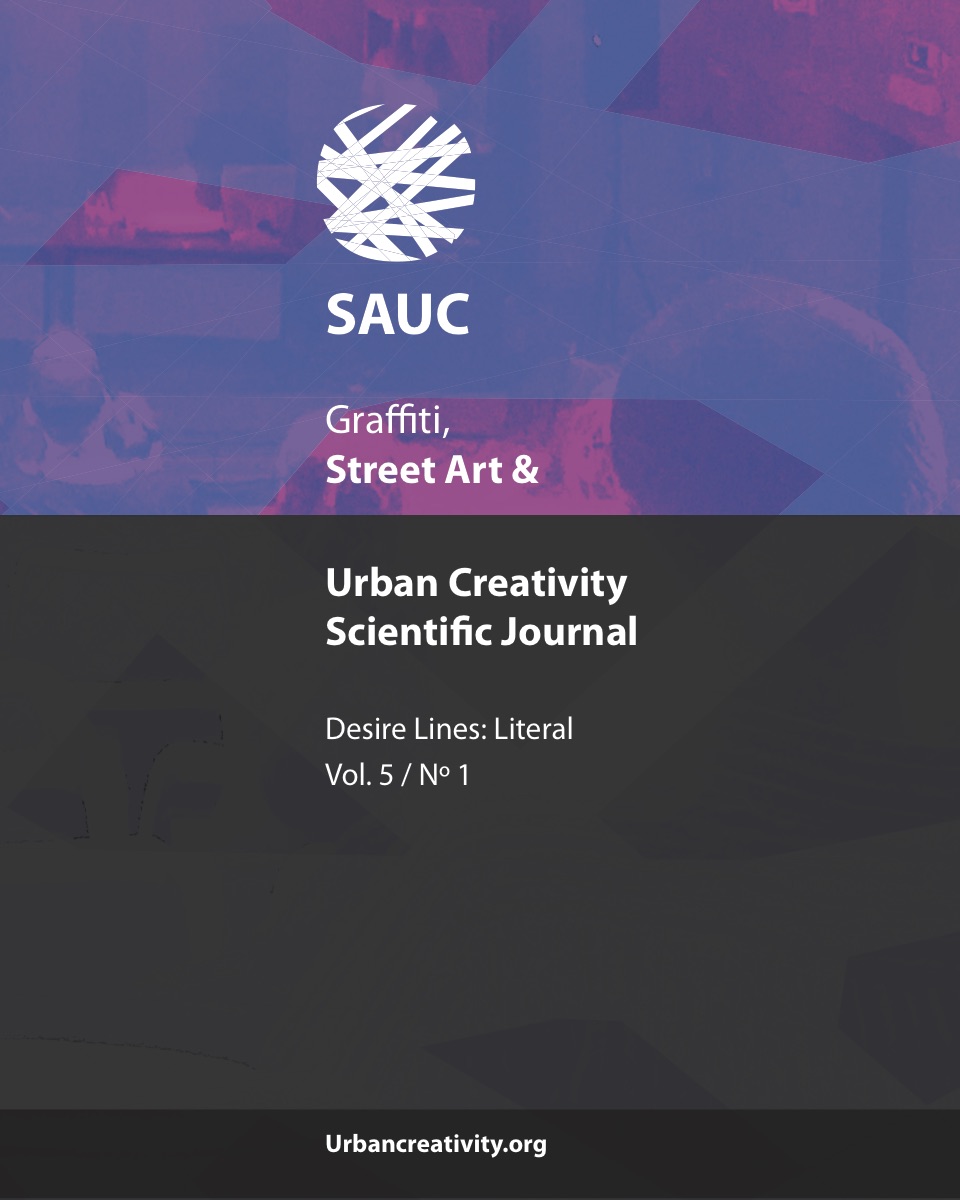Editorial
DOI:
https://doi.org/10.25765/sauc.v5i1.184Abstract
The SAUC V5 Issue 1, “Desire Lines: Literal” is about:
Street art and heritage conservation: From values to performativity; Development of art in Kosovo after World War II “The artist’s Art Works after the Second War and their similarities with the famous painters” ; The Local text of a city and public art: in search of a post-Soviet identity; The Brigada Ramona Parra and the art of muralising protest during the Pinochet Regime; From the street to the walls: the “yellow vests” movement in France; Red Army Gra ti: Reconstructing a lieu de mémoire; Con icts of Memory: Red Army Gra ti in the Reichstag 1945-2015; Street Art in Lisbon.
With contributions from Norway, Kosovo, Russia, UK, France, Germany and Brasil.
Downloads
Global Statistics ℹ️
|
156
Views
|
36
Downloads
|
|
192
Total
|
|
Downloads
Published
How to Cite
Issue
Section
License
Those authors who publish in this journal accept the following terms:
-
Authors retain copyright.
-
Authors transfer to the journal the right of first publication. The journal also owns the publishing rights.
-
All published contents are governed by an Attribution-NoDerivatives 4.0 International License.
Access the informative version and legal text of the license. By virtue of this, third parties are allowed to use what is published as long as they mention the authorship of the work and the first publication in this journal. If you transform the material, you may not distribute the modified work. -
Authors may make other independent and additional contractual arrangements for non-exclusive distribution of the version of the article published in this journal (e.g., inclusion in an institutional repository or publication in a book) as long as they clearly indicate that the work was first published in this journal.
- Authors are allowed and recommended to publish their work on the Internet (for example on institutional and personal websites), following the publication of, and referencing the journal, as this could lead to constructive exchanges and a more extensive and quick circulation of published works (see The Effect of Open Access).













